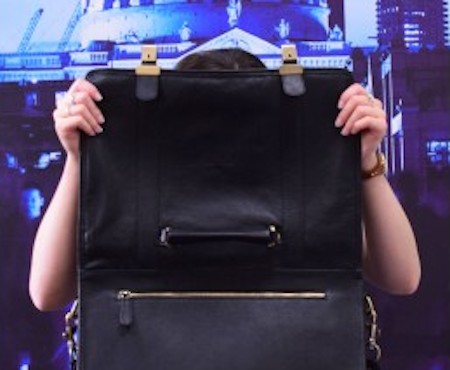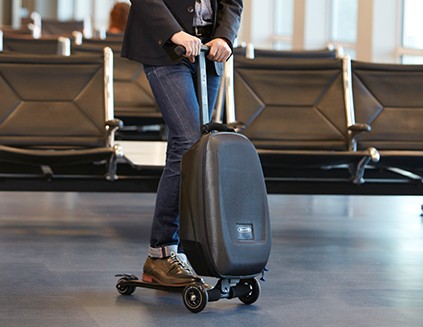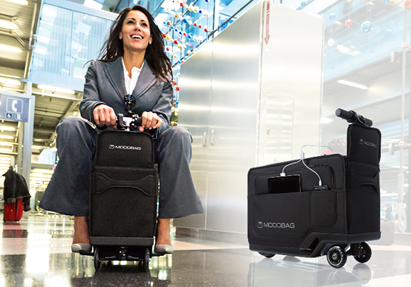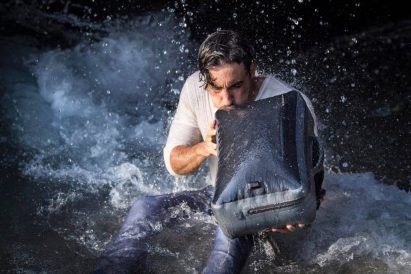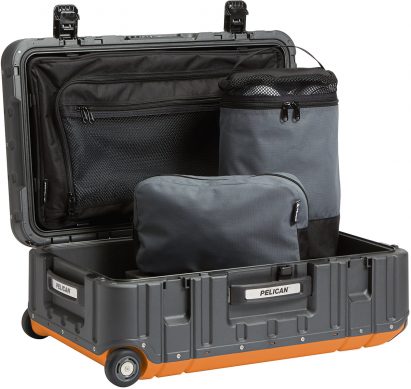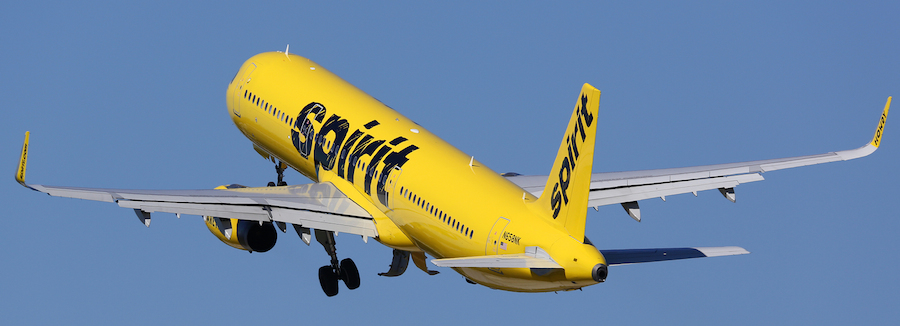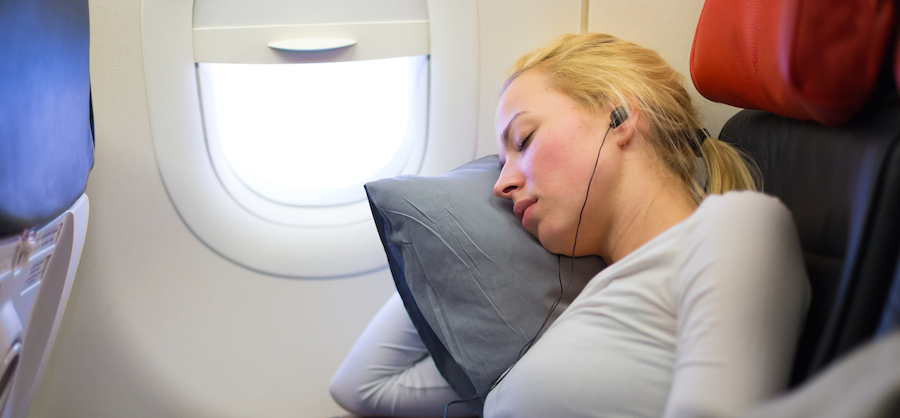The growing number of animals on airplanes has made it necessary for travelers to be able to identify them quickly. Because you never know when medical treatment, legal action, or adoption proceedings might be required.
Animals on airplanes can be divided into two broad groups. There are pets, which include service and emotional support animals. And there are pests, which include scorpions, spiders, snakes, and members of certain college fraternities.
In the first work of its kind, BobCarriesOn.com has put together a field guide identifying them all.
Dogs
Description: Dogs are distinguishable from other animals on airplanes by how some adult humans talk to them in a way that can cause even three-year-old children to cringe. Also, other than monkeys and members of certain college fraternities, dogs are the only flying animals likely to try to dry-hump the flight crew.
Sightings: The frequent flyers of the animal world, dogs can be found on almost any flight operated by airlines whose destinations have a large population of a certain type of couple. Which is the duel income no kids type who have never been comfortable talking with other adults except through a four-legged intermediary.
Field Notes: Demographic studies show that dogs flying as carry-on pets, for which the airlines can charge a hundred dollars or more, are most often in business or first class. Dogs flying as service or emotional support animals, which are required by law to go for free, are usually found in coach.
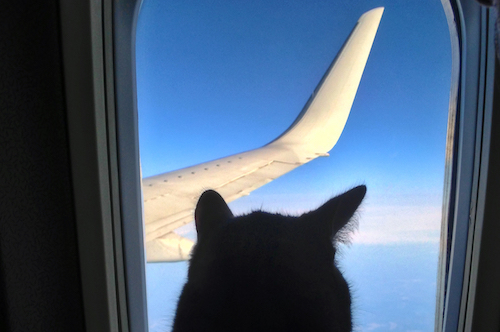
Cats
Description: As coach passengers board a flight, cats are the animals that glance at them with even more feigned indifference than do the passengers in first and business class. The other identifying characteristic of cats, of course, is that they don’t bark.
Sightings: The thing to know about cats is that you usually do not see them unless they want to be seen. Which was the case of a cat named Jack who deplaned himself from an American Airlines flight at JFK and lived there for 61 days before being found. It had all the makings of a funny story, except that Jack died.
Field Notes: If a passenger claims that a cat is an emotional support animal, you know they are lying. No cat has ever cared about anyone but itself.
Birds
Description: Birds are most easily recognized by the feathers left behind if a cat on board gets out of its cage. Usually, the birds are pets, but sometimes they are wild, and young, and desperate to know what it is like to fly at 500 miles per hour.
Sightings: Falcons, in particular, are common sights on Middle Eastern airlines. Including a recent flight on which a Saudi prince flew with 80 birds in the main cabin, each with its own seat, and passport.
Field Notes: In the U.S. most bird species are among the animals on airplanes that can ride in the cabin. Some airlines have made an exception of the cockatoo, however, which has a reputation for unruly behavior. Including talking back to flight attendants.
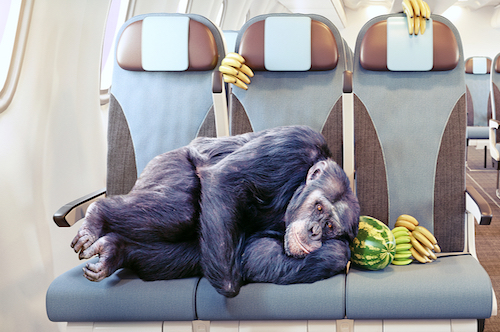
Monkeys
Description: Among all the animals on airplanes, a monkey can be the most difficult to tell from humans. Often, the only difference is that the monkey is causing the flight attendants less trouble.
Sightings: August 2007. A spider monkey rode under a passenger’s hat from Lima, Peru, to New York LaGuardia, via Ft. Lauderdale. The passenger claimed he didn’t know anything about it.
Field Notes: With the possible exception of the 2007 sighting, if a monkey is on an airplane the monkey is most likely a service animal. Some see this as an abuse of a system meant to help people who count on service dogs for aid. To which one simply need respond: Can a dog pick up a dropped cell phone? Or turn the pages of a book? Or push the flight attendant call button?
Deer
Description: A deer on an airplane looks like any other deer, or at least any other deer that is mounted on a wall. That is to say they are usually trophy racks.
Sightings: Most commonly, trophy racks are found on flights returning from Alaska, or Hollywood.
Field Notes: Delta, American, and United are among the airlines that allow trophy racks, for an extra fee. To lessen the objections other passenger may have, the racks are usually wrapped in plastic to look like a package containing a small child.
Miniature Horses
Description: A miniature horse on an airplane looks much like a dog, except that it is less likely to become agitated by the discovery that a cat is aboard.
Sightings: 2003. One was seen on an American Airlines flight from Boston to Chicago. It was flying in first class, as you might expect, because the horse and his travel companion, a blind man, were on their way to appear on Oprah.
Field Notes: Along with dogs, cats, monkeys, pigs, roosters, tortoises, marmosets, and kangaroos, miniature horses are among the animals that have been allowed to fly in the cabin of a passenger jet. They have all been categorized as service or “emotional support” animals. This may sometimes be a ploy to get pets on board that would not otherwise be able to fly, and may serve only, in the case of the horse, to give passengers an unfair speed advantage when making a dash for a lavatory. As flight attendant Heather Poole, author of Cruising Attitude, was quoted as saying in a story on NBC News, “I can spot a fake emotional support animal a mile away. It’s usually growling or barking at other support animals. That, or it’s dressed nicer than its owner.”
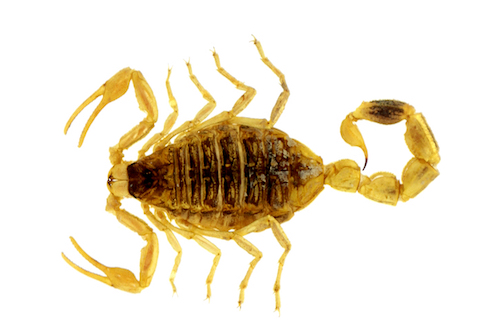
Scorpions
Description: Even setting aside their distinctively curved tail and stand-your ground attitude, scorpions are perhaps the most easily identified animals on airplanes. Just listen for fellow passengers to shout, as one did on a Calgary-bound flight mentioned below, “Oh my god, that’s a scorpion.”
Sightings: 2015. A woman was stung on an Alaska Airlines flight from Los Angeles to Portland, Oregon. April 2017. A man was stung on a flight from Houston to Calgary, Canada. In both cases, officials acted immediately, by pointing out that the planes had started their day in either Mexico or Central America.
Field Notes: A number of conclusions can be drawn from these incidents: Picking up a scorpion by its tail, as the man on the Calgary-bound flight did, significantly increases your chances of being stung. And if there were some kind of impediment to keep scorpions from crossing our southern borders things might be, according to one point of view, greater all around.
Snakes
Description: Some 450 snakes, including a 19-foot python, were used while shooting the 2006 action film Snakes on a Plane. But in real life nowhere near that number are found in the air on any given day, on any given flight. And the ones that are usually measure no more than five feet in length.
Sightings: March 2017. A four-foot snake was found behind the seat in the last row of a Ravn Alaska flight from Aniak, Alaska, to Anchorage. November 2016. A five-foot viper dangled from an overhead bin on an AeroMexico flight from Torreon, Mexico, to Mexico City.
Field Notes: To the great relief of litigators, the AeroMexico flight was captured on video. On the Ravn Alaska flight, a young boy sitting in the row where the snake was found said he didn’t know anything about it.
Tarantulas
Description: Fanged, aggressive, and often appearing to be in need of a shave, a tarantula can grow to the size of a dinner plate. Although hopefully not a dinner plate with a flight’s last beef entre on it. A tarantula’s bite is seldom fatal, making an encounter with one a disappointing experience for passengers thinking in terms of an out-of-court settlement.
Sightings: May 2016. Two tarantulas were on an Air Transet flight from Punta Cana, Dominican Republic, to Montreal, Canada.
Field Notes: Presence of the tarantulas on the flight was verified by passengers who “screamed and stood on their seats.” Officials believe the tarantulas escaped from a carry-on bag while being smuggled into Canada for sale by a trafficker who very likely decided that next time it would be easier just to stick to cocaine.
Insects
Description: Insects spotted on airplanes have included cockroaches, crickets, Japanese beetles, and june bugs. Sometimes, they are seen in the company of insect-eating lizards, such as geckos or the more aggressive Geico.
Sightings: September 2011. Cockroaches were videotaped crawling out of an air vent and overhead bin on an Air Tran flight from Charlotte, North Carolina, to Houston, Texas. The incident resulted in a lawsuit by a North Carolina couple.
Field Notes: Motives for the lawsuit were brought into question when it was observed that the people least likely to be disturbed by the sight of cockroaches would be from North Carolina.
Rodents
Description: Of all animals on airplanes rodents are most similar in appearance to U.S. Congressman Paul Ryan, except with ears that protrude less.
Sightings: April 2016. Rodents were sighted three times in one month aboard Air India flights, although it was unclear whether it was three different rats, or just one, using frequent flyer miles.
Field Notes: Passengers who are disgruntled over the fact that discovering rats aboard often results in an emergency landing have perhaps yet to fully consider the effect on an airplane in flight of having a section of its critical wiring chewed through.
 Frat Members
Frat Members
Description: This two-legged species exhibits some of the characteristics of all the other animals found on airplanes. Which makes them — except for the beer they will be demanding more of — sometimes difficult to distinguish.
Sightings: If you find yourself surrounded by cattle, sheep, racehorses, gorillas, or killer whales, all of which have flown, check your ticket. You have probably boarded a cargo plane by mistake. If, however, you are surrounded by Greeks who associate Athens only with the University of Georgia, you are probably on your way to a city hosting a major college sporting event or infamous for its goings-on during Spring Break.
Field Notes: Roll Tide.
Bob Payne is the editor-in-chief of Bobcarrieson.com, although his dream job has always been chief entomologist for McDonald’s.



